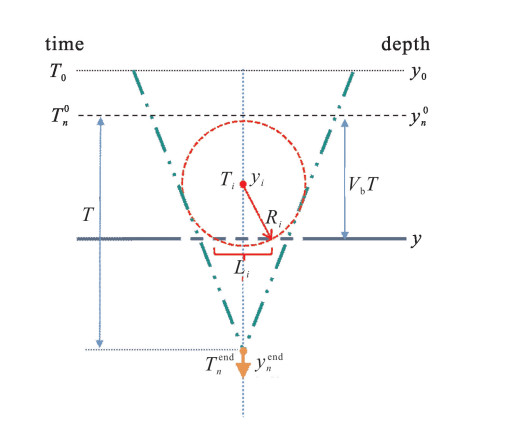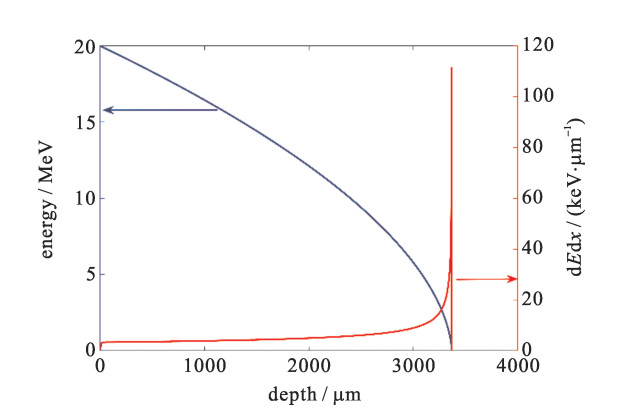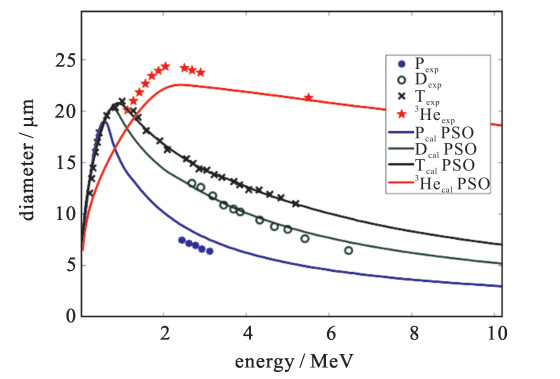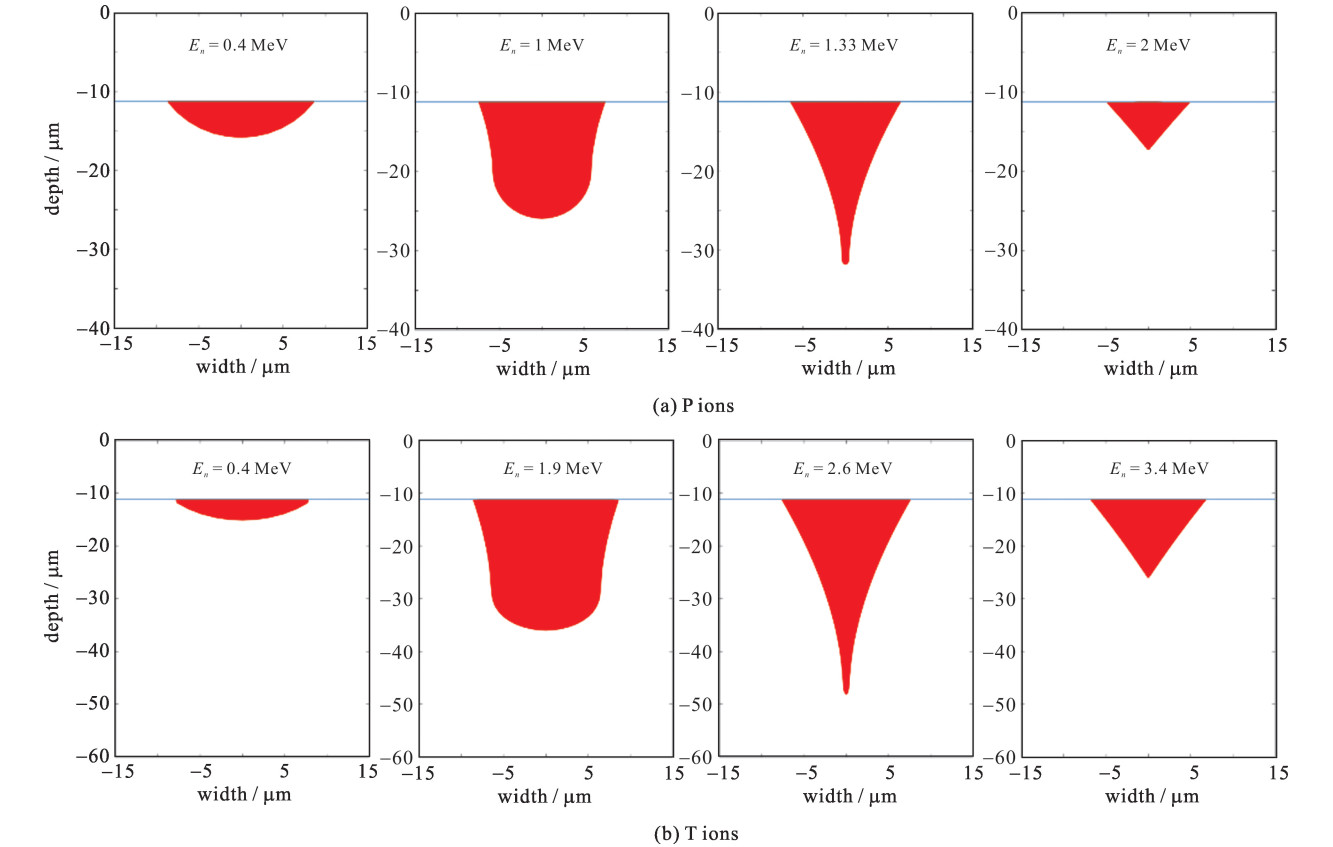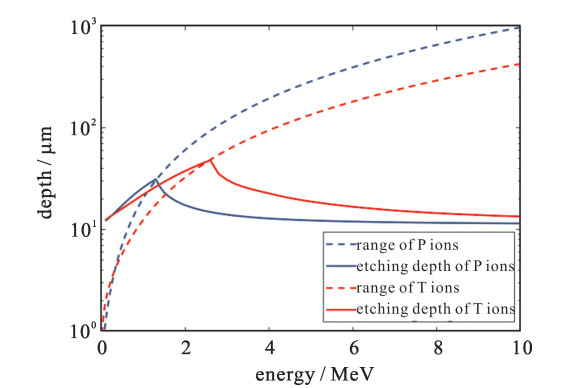| [1] |
Wilks S C, Langdon A B, Cowan T E, et al. Energetic proton generation in ultra-intense laser-solid interactions[J]. Phys Plasmas, 2000, 8(2): 542-549.
|
| [2] |
Mora P. Plasma expansion into a vacuum[J]. Phys Rev Lett, 2003, 90: 185002. doi: 10.1103/PhysRevLett.90.185002
|
| [3] |
Park H S, Hurricane O A, Callahan D A, et al. High-adiabat high-foot inertial confinement fusion implosion experiments on the National Ignition Facility[J]. Phys Rev Lett, 2014, 112: 055001. doi: 10.1103/PhysRevLett.112.055001
|
| [4] |
翟鹏济, 唐孝威, 王龙, 等. CR-39核径迹探测器及其在核科学等研究领域中的应用[J]. 物理, 2000, 29(7): 397-400. doi: 10.3321/j.issn:0379-4148.2000.07.004Zhai Pengji, Tang Xiaowei, Wang Long, et al. CR-39 plastic nuclear track detector and its application in nuclear science. Physics, 2000, 29(7): 397-400 doi: 10.3321/j.issn:0379-4148.2000.07.004
|
| [5] |
王兴功, 骆亿生, 张红, 等. CR-39固体核径迹探测器用于中子测量化学蚀刻参数的优化[J]. 核技术, 2005, 28(4): 319-323. doi: 10.3321/j.issn:0253-3219.2005.04.016Wang Xinggong, Luo Yisheng, Zhang Hong, et al. Optimum condition of chemical etching of CR-39 solid state nuclear track detector for neutron measurement. Nuclear Techniques, 2005, 28(4): 319-323 doi: 10.3321/j.issn:0253-3219.2005.04.016
|
| [6] |
Li C K, Petrasso R. Stopping of directed energetic electrons in high-temperature hydrogenic plasmas[J]. Physical Review E, 2004, 70: 067401. doi: 10.1103/PhysRevE.70.067401
|
| [7] |
Seguin F H, Fremje J A, Li C K, et al. Spectrometry of charged particles from inertial-confinement-fusion plasmas[J]. Review of Scientific Instruments, 2003, 74(2): 975-995. doi: 10.1063/1.1518141
|
| [8] |
Rygg J R, Seguin F H, Li C K, et al. Proton radiography of inertial fusion implosions[J]. Science, 2008, 319(5867): 1223-1225. doi: 10.1126/science.1152640
|
| [9] |
伍波, 董克攻, 吴玉迟, 等. 利用CR39上的径迹鉴别激光加速离子产物[J]. 强激光与粒子束, 2013, 25(2): 381-384. doi: 10.3788/HPLPB20132502.0381Wu Bo, Dong Kegong, Wu Yuchi, et al. Identification of ion products produced from laser acceleration experiments using tracks in CR39. High Power Laser and Particle Beams, 2013, 25(2): 381-384 doi: 10.3788/HPLPB20132502.0381
|
| [10] |
李波均, 杨建伦, 彭太平, 等. CR39探测器对5种能量α粒子的响应[J]. 核电子学与探测技术, 2010, 30(9): 1164-1167. doi: 10.3969/j.issn.0258-0934.2010.09.007Li Bojun, Yang Jianlun, Peng Taiping, et al. CR39 detector response for alpha irradiation of five energy. Nuclear Electronics& Detection Technology, 2010, 30(9): 1164-1167 doi: 10.3969/j.issn.0258-0934.2010.09.007
|
| [11] |
段晓礁, 谭志新, 兰小飞, 等. 用20~1020 keV单能质子刻度CR-39固体核径迹探测器[J]. 物理学报, 2010, 59(5): 3147-3153. https://www.cnki.com.cn/Article/CJFDTOTAL-WLXB201005036.htmDuan Xiaoqiao, Tan Zhixin, Lan Xiaofei, et al. Calibration of solid state nuclear track detector CR39 with monoenergetic protons. Acta Physica Sinica, 2010, 59(5): 3147-3153 https://www.cnki.com.cn/Article/CJFDTOTAL-WLXB201005036.htm
|
| [12] |
方美华, 魏志勇, 黄三玻, 等. 纳米尺度上CR-39径迹蚀刻动力学研究[J]. 核科学与工程, 2011, 31(3): 263-269. https://www.cnki.com.cn/Article/CJFDTOTAL-HKXY201103011.htm
|
| [13] |
Kodaira S, Yasuda N, Konishi T, et al. Calibration of CR-39 with atomic force microscope for the measurement of short range tracks from proton-induced target fragmentation reactions[J]. Radiation Measurements, 2013, 50: 232-236. doi: 10.1016/j.radmeas.2012.10.001
|
| [14] |
Nikezic D, Yu K N. Formation and growth of tracks in nuclear track materials[J]. Materials Science & Engineering: R: Reports, 2004, 46: 51-123.
|
| [15] |
Hicks D G. Charged-particle spectroscopy: A new window on inertial confinement fusion[D]. Cambridge: Massachusetts Institute of Technology, 1999: 103-114.
|
 百度学术
百度学术 本站查看
本站查看




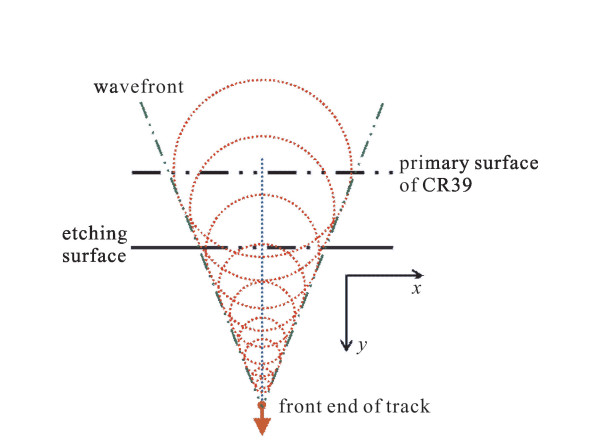
 下载:
下载:
